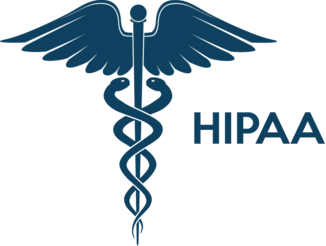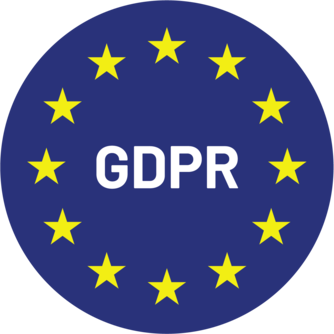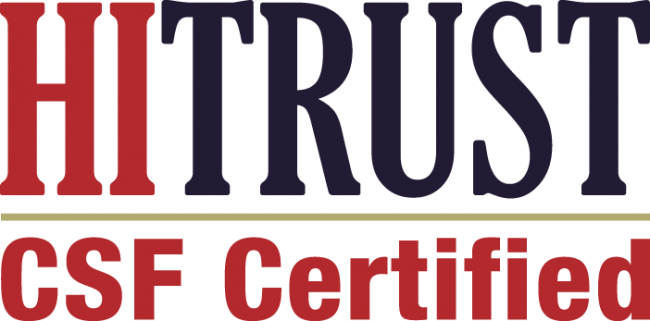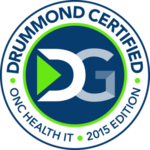The Philippines faces a mounting healthcare crisis that demands urgent attention and innovative solutions. With chronic diseases accounting for a staggering 68% of all deaths in the country, Filipino patients are increasingly grappling with multiple coexisting conditions—a phenomenon known as multimorbidity. As the burden of managing several chronic diseases simultaneously becomes more complex and costly, Remote Patient Monitoring (RPM) emerges as a transformative solution that promises to revolutionize chronic care delivery for millions of Filipinos.
The Multi-Morbidity Crisis in the Philippines
Multi-morbidity, defined as the presence of two or more chronic conditions in a single patient, has become the norm rather than the exception in Filipino healthcare. The statistical landscape paints a sobering picture of the challenge ahead.
Staggering Statistics and Facts
According to the World Health Organization, 511,748 Filipinos lost their lives to noncommunicable diseases (NCDs) in 2019 alone. The gender distribution reveals that 72% of these deaths occurred among women and 68% among men, highlighting the pervasive impact across all demographics.
The most prevalent chronic conditions creating multi-morbidity patterns in the Philippines include
Hypertension: Affecting approximately one in four adults in the Philippines, hypertension often serves as the gateway condition to multiple cardiovascular complications.
Diabetes Mellitus: The prevalence of Type 2 diabetes continues to rise, driven by lifestyle factors including sedentary habits, unhealthy dietary patterns, and genetic predisposition.
Heart Disease: Remaining the leading cause of death in the Philippines, heart disease frequently coexists with diabetes and hypertension, creating a dangerous triad of conditions.
Cancer: With lung, breast, and colon cancers being the most common malignancies, cancer patients often develop secondary conditions due to treatment side effects and compromised immune systems.
Chronic Kidney Disease (CKD): Particularly prevalent among elderly populations, CKD often develops as a complication of poorly managed diabetes and hypertension.
Respiratory Diseases: Including COPD and asthma, these conditions are exacerbated by high levels of air pollution in urban areas and indoor smoke exposure from biomass fuels.
The Economic Burden
The economic impact of multimorbidity extends far beyond individual healthcare costs. According to a WHO and United Nations Development Programme report, the economic cost of NCDs in the Philippines amounted to PHP 756.5 billion, highlighting the urgent need for cost-effective management strategies. This staggering figure includes direct medical costs, lost productivity due to disability and premature death, and the strain on healthcare resources.
Understanding Multi-Morbidity Challenges
Managing multiple chronic conditions simultaneously presents unique challenges that traditional healthcare models struggle to address effectively:
Fragmented Care Delivery
Filipino patients with multimorbidity often navigate multiple specialists, attend numerous appointments, and manage complex medication regimens. This fragmented approach leads to
- Care Coordination Gaps: Different specialists may prescribe conflicting treatments or medications without awareness of the patient’s complete health picture
- Medication Interactions: With multiple prescriptions from various providers, dangerous drug interactions become increasingly likely
- Duplicated Tests and Procedures: Lack of communication between providers often results in unnecessary repeat testing and increased costs
Patient Burden and Compliance Issues
The complexity of managing multiple conditions creates significant burdens for patients:
- Appointment Fatigue: Patients may need to attend 15-20 medical appointments annually across different specialties
- Medication Management: Complex dosing schedules with multiple medications increase the risk of non-adherence
- Financial Strain: Multiple copays, transportation costs, and lost wages from frequent medical visits create financial hardship
Geographic and Infrastructure Barriers
The Philippines’ archipelagic geography creates unique challenges:
- Rural Access Limitations: Patients in remote areas may travel for hours to reach specialized care
- Specialist Shortages: Most specialists are concentrated in major urban centers, leaving rural populations underserved
- Technology Infrastructure: While 57.4% of Filipinos remain offline, those with access can benefit significantly from digital health solutions
Remote Patient Monitoring: A Game-Changing Solution
Remote Patient Monitoring represents a paradigm shift in chronic care management, offering comprehensive solutions to the challenges posed by multi-morbidity. RPM utilizes digital technologies to monitor patients’ health status outside traditional clinical settings, enabling continuous care and early intervention.
How RPM Works for Multi-Morbidity
RPM systems integrate multiple monitoring devices and data streams to provide healthcare providers with a comprehensive view of a patient’s health status.
Integrated Monitoring Devices:
- Blood pressure monitors for hypertension management
- Glucometers for diabetes monitoring
- Weight scales for heart failure and kidney disease tracking
- Pulse oximeters for respiratory condition monitoring
- ECG devices for cardiac rhythm assessment
Data Integration and Analysis:
- Centralized health data collection from multiple devices
- Advanced analytics to identify patterns and predict exacerbations
- Real-time alerts for concerning trends across multiple conditions
Care Coordination Platforms:
- Unified dashboards for healthcare teams to monitor all conditions simultaneously
- Automated care protocols that adjust based on multiple health parameters
- Secure communication channels between patients and multi-disciplinary care teams
Clinical Benefits of RPM for Multi-Morbidity
Research demonstrates significant clinical improvements when RPM is applied to multi-morbid patients:
Early Detection and Intervention: RPM enables healthcare providers to identify health deteriorations before they require emergency intervention. For Filipino patients managing diabetes and hypertension simultaneously, continuous monitoring can detect dangerous blood sugar fluctuations or blood pressure spikes that might otherwise go unnoticed.
Medication Optimization: Real-time health data allows providers to adjust medications more precisely, reducing the risk of adverse drug interactions common in multi-morbid patients. This is particularly crucial for Filipino patients who may be taking medications for diabetes, hypertension, and heart disease simultaneously.
Reduced Hospital Readmissions: Studies show that RPM can reduce hospital readmissions by 25-50% among patients with multiple chronic conditions. For the Philippines, where hospital resources are often strained, this reduction is particularly valuable.
Improved Quality of Life: Patients report higher satisfaction and improved quality of life when their care is coordinated through RPM systems, as they experience fewer acute episodes and better overall health stability.
Transforming Filipino Healthcare Through RPM
Breaking Down Geographic Barriers
For Filipino patients living in remote islands or rural areas, RPM eliminates the need for frequent travel to urban medical centers. A patient in Mindanao managing diabetes, hypertension, and early-stage kidney disease can receive the same level of monitoring and care coordination as someone living in Metro Manila.
Case Example: Consider Maria, a 58-year-old grandmother from a remote area in Palawan who manages diabetes, hypertension, and early heart disease. Before RPM, she would need to travel 4 hours each way to see her cardiologist, endocrinologist, and nephrologist separately. With RPM, her vital signs, blood glucose levels, and symptoms are monitored daily, with her care team in Manila coordinating her treatment plan in real-time.
Addressing the Digital Divide
While connectivity challenges exist, strategic implementation of RPM can work within current infrastructure limitations:
Offline-Capable Devices: Modern RPM devices can store data locally and sync when connectivity is available, ensuring continuous monitoring even in areas with intermittent internet access.
Community Health Worker Integration: Health workers can be trained to assist patients with RPM technology, bridging the gap between high-tech solutions and local healthcare delivery.
Mobile Network Optimization: Partnerships with telecom providers can prioritize health data transmission, ensuring critical alerts reach healthcare providers even during network congestion.
Cultural Adaptation and Acceptance
RPM implementation in the Philippines must consider cultural factors that influence healthcare adoption:
Family-Centered Care: RPM systems can include family members in monitoring and care coordination, aligning with Filipino cultural values that emphasize family involvement in health decisions.
Trust Building: Gradual introduction of RPM through trusted community health workers helps build confidence in digital health technologies among populations who may be skeptical of new approaches.
Language and Communication: RPM platforms offering instructions and communications in local languages increase adoption rates and improve patient engagement.
Economic Impact and Healthcare System Benefits
Cost Reduction Analysis
RPM implementation offers significant cost savings across multiple levels of the healthcare system:
Individual Patient Savings:
- Reduced transportation costs (estimated PHP 500-2000 per avoided appointment)
- Decreased lost wages from medical leave
- Lower medication costs through optimized prescribing
- Reduced emergency room visits and hospitalizations
Healthcare System Savings:
- Decreased burden on specialist appointments
- Reduced hospital bed utilization
- Lower emergency department visits
- Improved resource allocation and planning
National Economic Benefits:
- Reduced productivity losses from chronic disease complications
- Lower healthcare expenditure as a percentage of GDP
- Improved workforce participation among chronic disease patients
Return on Investment Projections
Conservative estimates suggest that comprehensive RPM implementation for multi-morbid patients in the Philippines could:
- Reduce healthcare costs by 15-25% per patient annually
- Decrease hospital admissions by 30-40%
- Improve medication adherence rates from 50% to 80%
- Reduce emergency department visits by 35%
Given the PHP 756.5 billion annual cost of NCDs in the Philippines, even a 10% reduction through RPM implementation would save PHP 75.6 billion annually.
Implementation Strategies for the Philippines
Technology Infrastructure Requirements
Device Ecosystem:
- FDA-approved, user-friendly monitoring devices
- Interoperable systems that work across different brands and platforms
- Robust data security and privacy protections
- Multilingual user interfaces
Connectivity Solutions:
- Partnerships with telecommunications companies for priority health data transmission
- Satellite connectivity options for remote areas
- Offline-capable devices with delayed synchronization
- Mobile health units with portable connectivity solutions
Data Management Systems:
- Cloud-based platforms for scalable data storage and analysis
- Data-enabled analytics for pattern recognition and predictive modeling
- Integration with existing hospital information systems
- Compliance with Philippine data protection regulations
Healthcare Provider Training and Support
Physician Education Programs:
- Continuing medical education credits for RPM competency
- Specialty-specific training modules (cardiology, endocrinology, nephrology)
- Case-based learning using Filipino patient scenarios
- Certification programs for RPM specialization
Allied Health Professional Development:
- Nurses trained in RPM care coordination
- Pharmacists educated in medication management through RPM
- Community health workers skilled in technology assistance
- Technical support specialists for device troubleshooting
Conclusion: A Healthier Future for Filipino Patients
The implementation of Remote Patient Monitoring for multi-morbid Filipino patients represents more than a technological advancement—it embodies a fundamental shift toward patient-centered, coordinated, and accessible healthcare. As the Philippines continues to grapple with the growing burden of chronic diseases, RPM offers a pathway to transform healthcare delivery from reactive treatment to proactive management.
The statistics are clear: with 68% of deaths in the Philippines attributed to noncommunicable diseases and an economic burden of PHP 756.5 billion annually, the status quo is unsustainable. RPM provides a scalable, cost-effective solution that can reach the Archipelago’s most remote communities while delivering the coordinated care that multi-morbid patients desperately need.
For Filipino patients managing multiple chronic conditions, RPM represents hope for a future where geographic isolation no longer means healthcare isolation, where managing multiple conditions becomes simpler rather than overwhelming, and where the promise of universal healthcare becomes a reality through innovative technology and compassionate implementation.
The journey toward comprehensive RPM implementation in the Philippines will not be without challenges, but the potential benefits—improved health outcomes, reduced healthcare costs, enhanced quality of life, and stronger healthcare systems—make it not just an opportunity, but an imperative. As the country moves forward, RPM stands ready to transform the landscape of chronic care and create a healthier future for all Filipinos, regardless of how many conditions they manage or where they call home.
The time for action is now. The technology exists. The need is urgent. The opportunity to revolutionize healthcare for millions of Filipino patients with multi-morbidity awaits implementation. Through Remote Patient Monitoring, the Philippines can lead Southeast Asia in innovative, compassionate, and effective chronic care management, proving that even the most complex healthcare challenges can be addressed through the thoughtful application of technology and an unwavering commitment to patient welfare.



